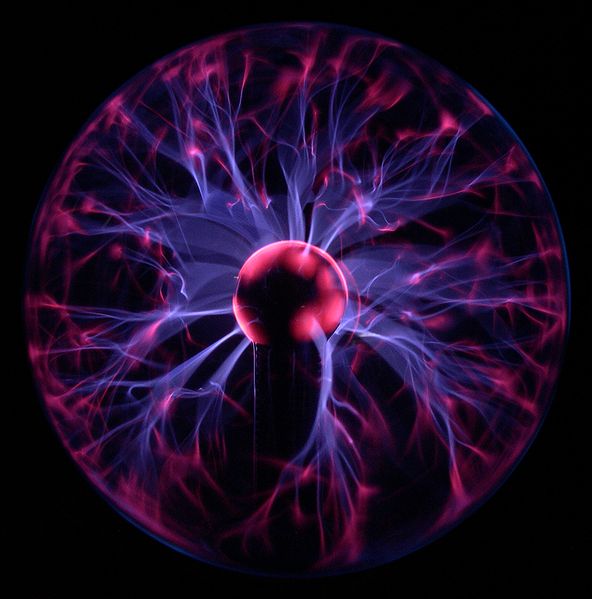Cold plasma jets could become a safe and effective alternative to antibiotics in the treatment of infections resistant to a variety of drugs - as claimed in an article published in the scientific journal Journal of Medical Microbiology

Cold plasma jets could become a safe and effective alternative to antibiotics in the treatment of infections resistant to a variety of drugs - as claimed in an article published in the scientific journal Journal of Medical Microbiology.
A joint research team of scientists from Russia and Germany showed that a treatment lasting only ten minutes with low-temperature plasma was not only able to destroy the drug-resistant bacteria responsible for the formation of inflammation in mice, but it also increased the rate of wound healing. The findings suggest that cold plasma jets may be a promising method for treating chronic inflammation when other approaches have failed to treat them.
The team, from the Gamaleya Institute of Epidemiology and Microbiology in Moscow, tested low-temperature plasma streams against various types of bacteria responsible for chronic inflammation and which are able to develop resistance to antibiotic substances as a result of co-growth within protective layers known as biofilms. The scientists showed that the plasma was lethal to up to ninety-nine percent of the bacteria that grew in a laboratory biofilm after five minutes, and that the plasma eliminated about ninety percent of the bacteria (on average) that cause infection of skin wounds in mice after ten minutes.
plasma (The term on Wikipedia) is known as the fourth state of aggregation of materials after solids, liquids and gases, and it is formed when high-energy processes "displace" electrons from atoms to create streams of ionized gas at high temperatures. Plasmas have an increasing number of technical and medical applications and hot plasmas are already used today to disinfect surgical instruments.
The main researcher explains that the recent development of cold plasmas with temperatures in the range of 40-35 degrees Celsius makes the technology a tempting possibility for the treatment against inflammations and infections. "Cold plasmas are able to destroy the bacteria by damaging the bacterial DNA and the structures found on their surface, without harming human tissues. We showed that plasma is able to destroy bacteria that grow together in biofilms found in wounds, even though thinner biofilms demonstrated some resistance to this treatment."
Plasma technology could, in the end, be a better alternative to antibiotic substances, according to the main researcher. "Our research proves that plasma is effective against disease-causing bacteria that are resistant to a variety of antibiotic drugs - not only in petri dishes but also in real inflammatory wounds," she explains. "Another great advantage inherent in this method is that it is not specific, so the meaning is that it is more difficult for the bacteria to develop resistance against it. It is a method without direct contact, without pain and does not contribute to chemical pollution of the environment."

6 תגובות
Even half an hour in the core of a nuclear reactor will destroy a significant percentage of bacteria resistant to antibiotics (and maybe the antibiotics as well).
I do not know the depth of the biochemistry of exposing tissues to free radicals, but as far as I know, I eat at least 5 vegetables a day to avoid this.
I did not understand how the plasma destroys bacteria but does not cause damage to normal cells and whether it is possible to use the technique on internal organs
Omer:
Your comment is correct. In the original article it is about wound infections and not any infections.
splendor:
The source of the confusion is a mistake in translation.
In the original article, they talk about thicker biofilms and not about thinner biofilms (the thicker the biofilm - it provides the bacteria with better protection against the plasma).
Cold plasma causes the creation of ozone, ultraviolet radiation, free radicals of various types and especially hydroxyl radicals and hydrogen peroxide. In short, there's no doubt that I'll get better at killing germs that way. What is not clear is the pretense that the human tissue is not damaged. I suppose that it is possible at low intensities to cause weaker damage to the human tissue, but then why is it different from ozone treatment which is done at much lower elevations.
Another problem is electromagnetic radiation which can be problematic, mainly for the therapist and less so for the patient.
The sentence "We have shown that plasma is able to destroy bacteria growing together in biofilms found in wounds, although thinner biofilms have demonstrated some resistance to this treatment."
It has a double and confusing meaning.
Does it mean that in cases of thinner biofilms the plasma treatment is ineffective or that the usual treatment has shown resistance?
If the new treatment demonstrated resistance, is the reason known?
"for external use only"